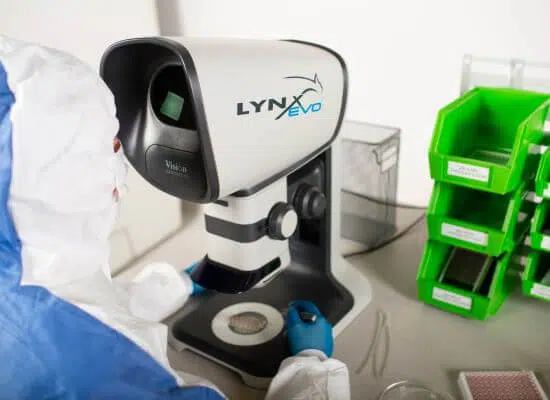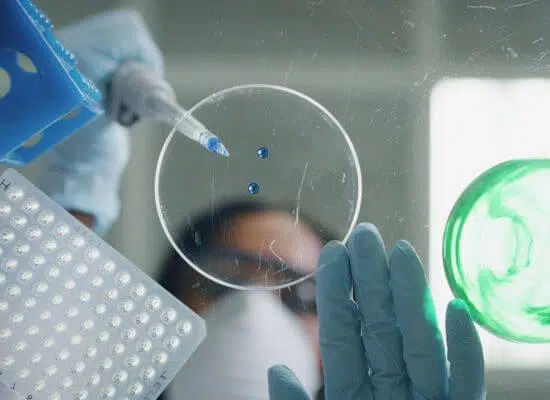Customer: Institute of Forensic Medicine, University of Cologne, Germany
Sector: Forensic science, criminal investigation
Application: Microscopic examination and trace evidence analysis for DNA profiling

The challenge
During the Cologne Carnival in 1988, a homicide case left investigators with a key piece of evidence: adhesive tape lifts containing microscopic fibres and suspected skin particles. However, the available technology at the time lacked the resolution required to recover viable DNA from such small fragments. The case went cold for 35 years.
The solution
The Cologne police cold case unit, working in collaboration with the Institute of Forensic Medicine at the University of Cologne, reopened the investigation and turned to modern forensic microscopy tools. They used Lynx EVO stereo microscope to re-examine the original evidence. The system’s high-resolution imaging and ergonomic, eyepiece-less design allowed a forensic assistant to spend months carefully scanning the adhesive tapes, successfully locating and recovering trace skin flakes.
The outcome
The precision optics of Lynx EVO helped analysts identify minute skin flakes, while its eyepiece-less, ergonomic design allowed long periods of close examination without discomfort. This level of imaging precision is essential for DNA trace recovery in complex cold case investigations. As a result, the team extracted viable DNA, leading to the identification of a suspect and ultimately solving the case, more than three decades after the original crime.
The case and the technology behind the investigation were recently featured on ZDF, the German national broadcaster, highlighting how forensic microscopy is transforming modern criminal investigations.
Why Lynx EVO?
- Superior imaging for small particle identification
- Ergonomic, eyepiece-free design for long sessions
- Trusted in forensic science and laboratory settings

FAQs
1. What makes Lynx EVO suitable for forensic applications?
Lynx EVO combines high-resolution imaging with a wide field of view, allowing forensic teams to identify fine trace evidence such as fibres, skin flakes, and other microscopic materials.
2. How does an eyepiece-less design benefit forensic examiners?
The eyepiece-less design reduces neck and eye strain, allowing operators to maintain a comfortable posture and focus during long, detailed inspection sessions.
3. What types of forensic evidence can be examined using Lynx EVO?
Lynx EVO is ideal for analysing fibres, biological residues, debris from crime scenes, tool marks, and other trace materials collected on swabs or adhesive tapes.
4. Can Lynx EVO be integrated into an existing forensic workflow?
Yes. Lynx EVO is compatible with standard lab equipment and can be used as a stand-alone tool or alongside digital documentation systems.
5. Is training required to use Lynx EVO in a forensic lab?
Basic operator training is available and typically completed quickly, thanks to the intuitive design and simplified controls of the system.
Learn More
Discover how Lynx EVO and our full range of optical inspection systems are used in forensic science, laboratories, and criminal investigations: https://www.visioneng.com/products/stereo-microscopes/lynx-evo/
Contact our team to learn more about using Lynx EVO as a forensic microscope for trace evidence analysis and DNA trace recovery: enquiries@visioneng.co.uk


